

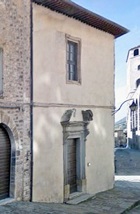
This small church belonged to the Università dei Falegnami (carpenters’ guild). The guild was documented in 1326, and its premises next to the church date to this period. However, the church was rebuilt in 1686 and consecrated by Bishop Sebastiano Pompilio Bonaventura in 1691. It was larger than the original church and reoriented relative to it by 90°.
The church has been recently restored after the earthquake of 1997, and is well-illustrated in the website of the restorers, Syncronia SRL.
Interior
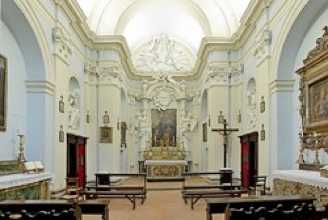
Holy Family (18th century)
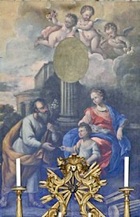
Madonna del Latte with saints (18th century)
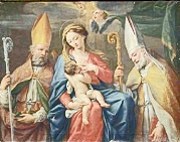
This altarpiece on the right wall, which depicts the Madonna and Child with SS Nicholas and Ubaldus, is attributed alternatively to Giuseppe Reposati or Giovanni Francesco Ferri.
Holy Family (18th century)
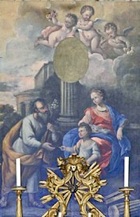
St Joseph in his Workshop (ca. 1610)
This altarpiece, which is attributed to Virgilio Nucci, is [where ?]. It depicts St Joseph in his workshop, as the Virgin plays with the young Jesus and his cousin, St John the Baptist. SS Zachariah and Elisabeth, the parents of St John the Baptist, are about to enter presumably to collect their son.
Read more:
G. Fidanza, “La Pittura del Settecento a Gubbio.: Storia e Documenti”, (2009) Rome
Return to Monuments of Gubbio.
Return to Walk I.

